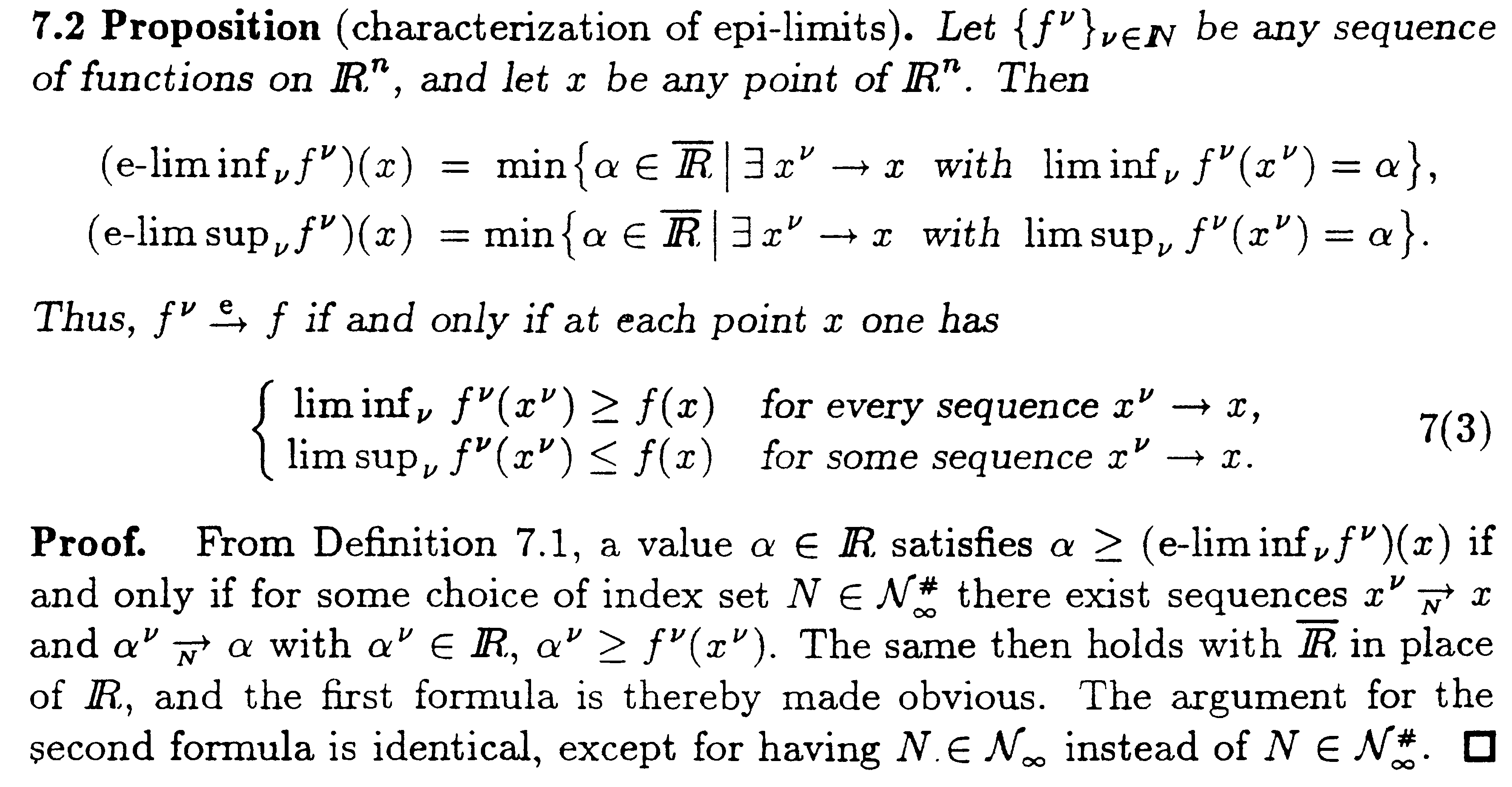I am struggling with the proof of a property of epi-convergence.
We need the following definitions:
For a sequence of sets $(C^\nu)_\nu$ in $\mathbb R^n$, the outer limit is the set $\limsup_\nu C^\nu = \{x:~ \exists N \in \mathcal N_\infty^\#, \exists x^\nu\in C^\nu:~ x^\nu\stackrel{N}\to x\} $. The inner limit is the set $\liminf_\nu C^\nu = \{x:~ \exists N \in \mathcal N_\infty, \exists x^\nu\in C^\nu:~ x^\nu\stackrel{N}\to x\} $
Here, $\mathcal N_\infty^\#$ is the set of subsequences of $\mathbb N$ and $\mathcal N_\infty$ is the set of "tails" of $\mathbb N$, i.e. sets of the form $\{M,M+1,M+2,\ldots\}$.
Also, the lower and upper epi-limit of a sequence of functions $f^\nu: \mathbb R^n\to \mathbb R$ is defined as (first by their epigraph):
$$ epi( e-\liminf_\nu f^\nu) := \limsup_\nu (epi (f^\nu))\qquad \text{ ( = outer limit of epigraphs)}$$ and
$$ epi( e-\limsup_\nu f^\nu) := \liminf_\nu (epi (f^\nu))\qquad \text{ ( = inner limit of epigraphs)}$$
Then we can define $e-\liminf_\nu f^\nu$ and $e-\limsup_\nu f^\nu$ by extracting the graph from the epigraph. If those two functions coincide, we call this the epilimit $e-\lim_\nu f^\nu$.
My problem is now the proof of the following proposition (from Rockafellar, Wets, "Variational Analysis", Chapter 7, page 241):
Now I don't understand at all everything from "the first formula is thereby obvious".
Even if we have $N\in \mathcal N_\infty^\#$ and $x^\nu \stackrel{N}{\to} x$, $\alpha^\nu \stackrel{N}{\to} \alpha$, how do we construct a sequence $x^\nu \to x$?
And even if the first two equations in the proposition are proven, how do we obtain equation 7(3) from there?

